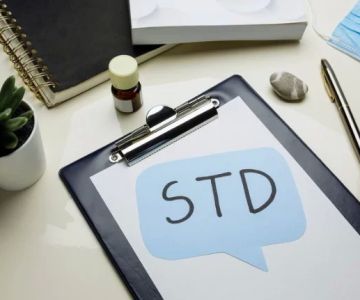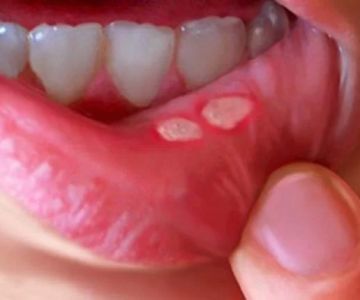
Understanding Faecal-Oral Transmitted Diseases
Faecal-oral transmitted diseases are infections spread through the ingestion of pathogens originating from fecal matter. This transmission route is a significant public health concern worldwide, including in the United States. The contamination of food, water, or hands with fecal material introduces bacteria, viruses, or parasites into the human digestive system, leading to illness.
1. How Faecal-Oral Transmission Occurs
The faecal-oral route typically involves several critical pathways:
1.1 Contaminated Food and Water
Food and water sources can become contaminated with fecal matter during preparation, handling, or irrigation, making them common carriers of disease-causing microbes.
1.2 Poor Hygiene and Sanitation
Inadequate handwashing after using the bathroom or before handling food allows pathogens to transfer from feces to mouth, perpetuating the infection cycle.
1.3 Direct Contact and Environmental Exposure
Contact with contaminated surfaces or soil also facilitates transmission, especially in crowded or unsanitary living conditions.
2. Common Faecal-Oral Transmitted Diseases
Several diseases spread primarily through the faecal-oral route, including:
2.1 Hepatitis A
A viral infection causing liver inflammation, Hepatitis A often spreads through contaminated food or water and poor hygiene practices.
2.2 Cholera
Caused by the bacterium Vibrio cholerae, cholera leads to severe diarrhea and dehydration, frequently linked to unsafe drinking water.
2.3 Giardiasis
An intestinal illness caused by the parasite Giardia lamblia, commonly contracted from contaminated water.
2.4 Typhoid Fever
Caused by Salmonella Typhi, this bacterial infection spreads through contaminated food and water, causing high fever and systemic illness.
3. Impact on Public Health
Faecal-oral transmitted diseases contribute significantly to global morbidity and mortality, especially in vulnerable populations like children and the elderly. In the U.S., outbreaks can occur due to lapses in sanitation or hygiene, posing challenges to healthcare systems.
4. Real-Life Incident: A Community Outbreak
In a recent outbreak in a small American town, contaminated well water led to a spike in giardiasis cases. Prompt public health intervention involving water treatment and hygiene education curtailed the spread, illustrating the importance of vigilance and prevention.
5. Preventing Faecal-Oral Transmitted Diseases
Effective prevention strategies focus on breaking the transmission cycle through:
5.1 Proper Hand Hygiene
Regular and thorough handwashing with soap, especially after restroom use and before eating or preparing food.
5.2 Safe Food and Water Practices
Ensuring drinking water is treated and food is cooked and stored properly reduces contamination risk.
5.3 Improving Sanitation Infrastructure
Access to clean toilets and waste management systems is essential for community health.
6. Role of Healthcare and Public Awareness
Healthcare providers and public health agencies play a crucial role in surveillance, education, and response to faecal-oral disease outbreaks. Raising awareness about transmission and prevention empowers individuals to protect themselves and their communities.
7. Conclusion: Staying Informed and Safe
Understanding what faecal-oral transmitted diseases are and how they spread is key to preventing them. Simple hygiene habits combined with public health efforts can drastically reduce these infections. For more detailed information and health services, consider consulting experts like those at Dentistry Toothtruth.







 Westgate Dental Arts3.0 (2 review)
Westgate Dental Arts3.0 (2 review) Coventry Family Dental4.0 (247 review)
Coventry Family Dental4.0 (247 review) Familia Dental3.0 (1028 review)
Familia Dental3.0 (1028 review) Dr. Daniel S. Fife, DDS4.0 (31 review)
Dr. Daniel S. Fife, DDS4.0 (31 review) Dentistry At Suburban Square: Michael I. Wollock, DMD4.0 (1228 review)
Dentistry At Suburban Square: Michael I. Wollock, DMD4.0 (1228 review) Comfort Care Dental4.0 (1156 review)
Comfort Care Dental4.0 (1156 review) The Importance of Oral Health Education During Pregnancy for a Healthy Pregnancy
The Importance of Oral Health Education During Pregnancy for a Healthy Pregnancy Why Skipping Dental Checkups Can Lead to Bigger Oral Health Problems
Why Skipping Dental Checkups Can Lead to Bigger Oral Health Problems Best Tips for Brushing Your Teeth Properly for Healthy Gums: Essential Techniques for Oral Health
Best Tips for Brushing Your Teeth Properly for Healthy Gums: Essential Techniques for Oral Health Advantages of Porcelain Dental Restorations
Advantages of Porcelain Dental Restorations How Can Diabetes Cause Tooth and Gum Problems? Preventing and Managing Oral Health Issues
How Can Diabetes Cause Tooth and Gum Problems? Preventing and Managing Oral Health Issues Healthy Habits for Promoting Good Oral Health and Hygiene: Tips for a Healthy Smile
Healthy Habits for Promoting Good Oral Health and Hygiene: Tips for a Healthy Smile